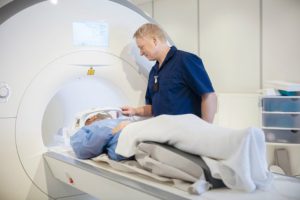Diagnosing Headaches Through Radiology
Radiology is perhaps most closely aligned with the general x-ray and when many people think of radiological services they probably think of broken bones.

Diagnosing Headaches Through Radiology
Radiology is perhaps most closely aligned with the general x-ray and when many people think of radiological services they probably think of broken bones. But radiology is about much more than bones, helping to diagnose a variety of much deeper health issues. The need for an x-ray is clear when it comes to a possible sprain or fracture, but the need may not be as apparent when it comes to other concerns. One of these such concerns may be headaches. Radiological scans can be an excellent and effective tool when it comes to finding out the underlying cause of severe or ongoing headaches.
First Things First
If you’ve been experiencing a headache, you’ll first head to your primary physician. Your doctor will examine you and ask you a number of questions to determine the cause of your headache, the associated symptoms, and any other influencing factors. Most headaches can be diagnosed right there in the doctor’s office. Common diagnoses include tension, migraines, or cluster headaches. Most headaches do not require any further testing, and are not a significant health concern. The doctor will ask you when your headaches began and how frequently they occur. He or she will also ask you about your level of pain. Lastly, the doctor may inquire about your lifestyle habits and any recent changes to those habits. With an analysis of your symptoms alongside your medical history, most headaches can be diagnosed easily and treatment suggestions offered directly by your physician.
Using Radiology for Headaches
Sometimes symptoms go beyond the typical patterns however, and testing is needed to determine the cause of your headaches. At Vision XRAY, we use MRI and CT scan as tools in these diagnoses, both capable of generating detailed images of the head.
The CT (computerised tomography) scan uses x-ray technology to create cross-section images of the body’s interior. A CT can show high-quality scans and is often used to check for any bleeding in the brain. This option might be chosen if a physician suspects a serious problem such as a brain tumor, aneurysm, or stroke. MRI (magnetic resonance imaging) creates images through magnetised radio waves. The MRI can often provide a greater detail to images, making it an optimal tool for detecting certain conditions. It also is able to show certain regions of the brain more closely such as the space near the spinal column. Brain MRI may be selected to assess developmental abnormalities, blood vessel issues, eye and inner ear conditions, and chronic nervous system disorders such as multiple sclerosis. Both scans are effective and produce superb imagery, making them incredibly useful in the process of diagnosis.
It is important to remember that a brain scan such as an MRI or CT scan is not necessarily an indicator of a serious problem, but a precaution taken to ensure your health.
If you are concerned about your headaches, we recommend making an appointment with your primary care physician. We at Vision XRAY are also happy to speak with you at any time regarding our services.
Read our articles and FAQs
We’re delighted to provide updates on the latest medical imaging technology and answer your most frequently asked questions about our services.









